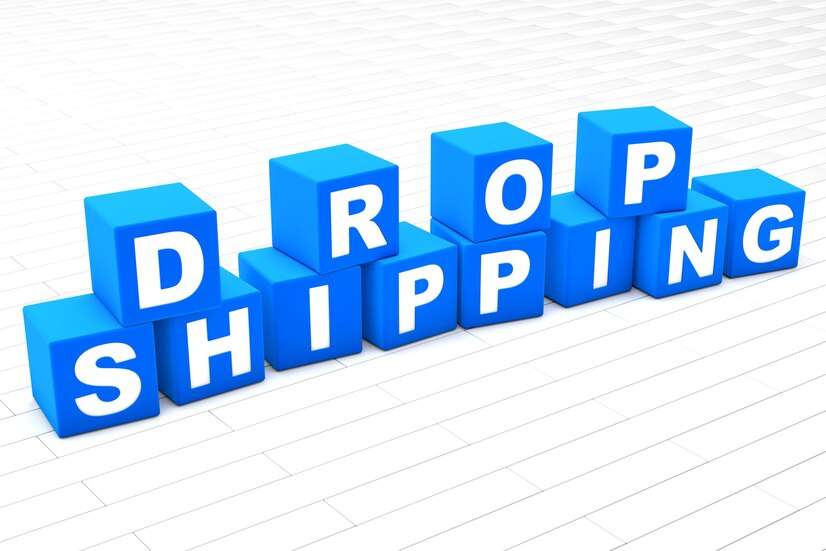In today’s digital age, starting a business has become more accessible than ever. One of the most popular and low-cost methods gaining traction is dropshipping. This business model allows entrepreneurs to sell products to customers without holding any inventory. Instead, they partner with suppliers who handle the storage, packaging, and shipping directly to the customer. This guide aims to provide a detailed overview of what dropshipping entails, how to get started without any initial investment, and practical steps to build a successful dropshipping business.
1. Understanding Dropshipping
Dropshipping is a retail fulfillment method where a store doesn’t keep the products it sells in stock. Instead, when a store sells a product using the dropshipping model, it purchases the item from a third party and has it shipped directly to the customer. This eliminates the need for upfront inventory investment and minimizes the risk typically associated with traditional retail businesses.
1.1 How Dropshipping Works
The process of dropshipping can be broken down into several key steps:
- Setting Up Your Online Store: Choose a platform like Shopify, WooCommerce, or BigCommerce to create your storefront.
- Choosing Products: Select products to sell from suppliers who offer dropshipping services.
- Listing Products: Import product listings to your store and set your own prices.
- Customer Places an Order: When a customer buys a product from your store, you forward the order to your supplier.
- Supplier Ships the Product: The supplier packages and ships the product directly to the customer.
- Earning Profit: You earn profit by selling the product at a higher price than the supplier’s cost, after deducting any fees.
1.2 Advantages of Dropshipping
- Low Startup Costs: Minimal investment in inventory allows you to start with little capital.
- Flexibility: Operate your business from anywhere with an internet connection.
- Wide Product Selection: Access a vast range of products without managing inventory.
- Scalability: Easily expand your product offerings and scale your business as it grows.
1.3 Challenges of Dropshipping
- Supplier Dependence: Issues like stockouts, shipping delays, and product quality can affect customer satisfaction.
- Lower Profit Margins: Selling products at retail prices means thinner profit margins compared to wholesale.
- Customer Service: Maintaining good customer relations despite not handling fulfillment directly can be challenging.
- Market Saturation: High competition and price sensitivity in popular niches can make it difficult to stand out.
2: How to Start Dropshipping for Free
Starting a dropshipping business without any upfront investment is possible, albeit challenging. Here’s a step-by-step guide on how to get started for free:
2.1 Choose a Profitable Niche
Selecting the right niche is crucial for dropshipping success. Consider factors like market demand, product profitability, and competition analysis. Tools like Google Trends, Amazon Best Sellers, and social media trends can help identify profitable niches.
2.2 Research Suppliers
Find reliable suppliers who offer dropshipping services. Platforms like AliExpress, Oberlo, SaleHoo, and Spocket are popular choices for finding suppliers. Look for suppliers with good reviews, quality products, and efficient shipping methods.
2.3 Set Up Your Online Store
Choose an e-commerce platform that offers a free plan or trial period. Shopify, WooCommerce (through WordPress), and BigCommerce provide user-friendly interfaces and essential features like payment gateways and product management.
- Setting Up Shopify: Sign up for a free trial on Shopify’s website. Customize your store’s design, add products, and configure settings such as shipping and taxes.
- Setting Up WooCommerce: Install WordPress and add the WooCommerce plugin. Choose a free theme, set up products, and configure payment options using PayPal or Stripe.
2.4 List Products and Set Prices
Import products from your chosen suppliers to your online store. Write compelling product descriptions, optimize images, and set competitive prices that ensure profitability while attracting customers.
2.5 Market Your Store
Promote your dropshipping store using free marketing channels such as social media platforms (Facebook, Instagram, Pinterest), content marketing (blogging, guest posting), and email marketing. Engage with your audience, create valuable content, and optimize your website for SEO to attract organic traffic.
2.6 Manage Orders and Customer Service
Once orders start coming in, forward order details to your suppliers promptly. Provide excellent customer service by responding to inquiries promptly and resolving issues professionally.
2.7 Analyze and Optimize
Monitor your store’s performance using analytics tools provided by your e-commerce platform. Track sales, conversion rates, and customer behavior to identify areas for improvement. Optimize product listings, marketing strategies, and customer service processes based on data-driven insights.
2.8 Scale Your Business
As your dropshipping business grows, reinvest profits into expanding your product range, improving marketing efforts, and enhancing customer experience. Consider exploring additional sales channels, investing in paid advertising, or upgrading your e-commerce platform to support growth.
3: Advanced Strategies for Dropshipping Success
3.1 Building a Strong Brand
Differentiate your dropshipping store by creating a unique brand identity. Develop a compelling brand story, design a memorable logo and website, and maintain consistent branding across all marketing channels.
3.2 Offering Excellent Customer Service
Provide exceptional customer support to build trust and loyalty. Respond to inquiries promptly, offer hassle-free returns, and resolve issues professionally to enhance customer satisfaction.
3.3 Optimizing for Mobile
Ensure your dropshipping store is mobile-friendly to cater to the growing number of mobile shoppers. Choose responsive website themes, optimize images and text for mobile viewing, and test your website’s performance on different devices.
3.4 Leveraging SEO Techniques
Improve your store’s visibility in search engine results by implementing SEO best practices. Optimize product descriptions with relevant keywords, build backlinks through guest blogging and collaborations, and regularly update your website content.
3.5 Expanding Your Product Range
Diversify your product offerings to appeal to a broader audience. Identify related products or complementary items that align with your niche and add them to your store to increase average order value and customer retention.
3.6 Automating Operations
Streamline order management, customer service, and marketing tasks using automation tools. Use email marketing automation, order fulfillment software, and customer relationship management (CRM) systems to save time and improve efficiency.
4: Legal and Financial Considerations
4.1 Registering Your Business
Depending on your location and business structure, register your dropshipping business with the appropriate authorities. Choose a business name, obtain necessary licenses and permits, and comply with tax regulations.
4.2 Managing Finances
Track income and expenses related to your dropshipping business using accounting software or spreadsheets. Separate personal and business finances by opening a business bank account and maintaining accurate records for tax purposes.
4.3 Understanding Tax Obligations
Consult with a tax professional to understand your tax obligations as a dropshipper. Determine sales tax requirements based on your business location and customers’ locations, and ensure compliance with tax filing deadlines.
4.4 Protecting Your Intellectual Property
Secure trademarks for your brand name, logo, and any unique product designs to prevent infringement. Consider intellectual property protection measures to safeguard your business assets and maintain brand integrity.
5: Common Dropshipping Mistakes to Avoid
5.1 Choosing Poor Suppliers
Select suppliers based solely on price without considering factors like product quality, shipping times, and customer reviews.
5.2 Ignoring Customer Feedback
Neglecting to listen to customer feedback and address concerns can lead to negative reviews and decreased customer satisfaction.
5.3 Overestimating Profit Margins
Failing to accurately calculate costs and profit margins can result in pricing products too high or too low, impacting profitability.
5.4 Neglecting Marketing Efforts
Relying solely on organic traffic without investing in marketing efforts can limit your store’s growth potential and visibility.
5.5 Lack of Differentiation
Failing to differentiate your store from competitors by offering unique products, superior customer service, or a compelling brand story.
6: Case Studies of Successful Dropshipping Businesses
6.1 Case Study 1: [Business Name]
Explore the journey of a successful dropshipping business, including challenges faced, strategies implemented, and key milestones achieved.
6.2 Case Study 2: [Business Name]
Learn from another dropshipping success story, including insights into niche selection, supplier relationships, and growth strategies.
7: Conclusion
In conclusion, dropshipping offers a viable pathway to entrepreneurship with minimal upfront costs and the potential for scalability. By selecting a profitable niche, partnering with reliable suppliers, and implementing effective marketing strategies, aspiring dropshippers can build a successful online business. While the dropshipping model presents challenges such as supplier reliability and market competition, careful planning, continuous optimization, and a focus on customer satisfaction can lead to long-term success. Whether you’re looking to start a side hustle or pursue full-time entrepreneurship, dropshipping provides an accessible opportunity to enter the e-commerce industry and achieve financial independence.



This is so good
Nice course